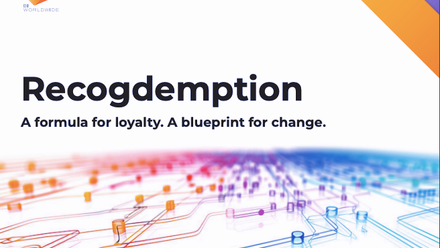How to ensure your recognition and reward is inclusive and equitable
In today’s diverse and dynamic workplaces, inclusivity can’t be an afterthought. It must be intentionally built into every aspect of how you recognise and reward your people.
A truly inclusive strategy doesn’t just ensure fairness - it actively works to meet the varied needs and values of your workforce.
It considers everything from cultural differences and accessibility to different working styles and life priorities.
When done right, inclusive reward and recognition can boost employee engagement, improve retention, and create a stronger sense of belonging. But it takes more than good intentions to get there.
It requires thoughtful design, clear communication, and a commitment to listening and evolving.
Here are our five actionable tips to help ensure your strategy is inclusive, equitable, and aligned with the diverse needs of your workforce:
1. Make reward and recognition a key component of EVP
One of the main disconnects between a successful reward and recognition strategy and one that resonates with only a few is how you build it into your wider offering. A common pitfall we see is treating it as a standalone initiative.
Even the most generous, market-leading rewards can fall flat if employees don’t know they exist, or if they’re too complicated to access.
How to avoid this? Communication. Whether it’s through newsletters, emails, team briefings, or your intranet (whichever channels your people engage with – ensure you know this!), keep your rewards visible and easy to understand.
Regularly showcase available benefits and highlight stories of how people are using them. When your strategy is embedded in everyday communication, it becomes part of your culture, not just a list of perks.
2. Recognise work-life balance
Work–life balance is frequently mentioned but rarely defined. What does it mean for your people, and how do you enable it?
Ask yourself:
- Can employees flex their hours for childcare or personal commitments?
- Is it acceptable to leave early on a Friday or step away to take an important personal call?
- Do you actively encourage people to ‘switch off’ at the end of the day?
People have lives outside of work and recognising that reality is no longer optional. Surveys show that nearly two-thirds of employees would take a pay cut (or move job for a lower salary) for better work–life balance.
But here’s the key: not everyone wants the same thing. A one-size-fits-all solution won’t work, so offering flexibility and choice is essential to building an inclusive approach.
3. Listen to your employees
If you haven’t asked your employees what they want, there’s a good chance your current strategy isn’t working as well as you think.
Start with regular feedback - an annual engagement survey at a minimum. Even better, create ongoing channels for feedback throughout the year.
The most powerful thing you can say in your next update? “You said, we listened, we acted.”
It's important to recognise that everyone is different, so creating and implementing a reward and recognition strategy that resonates broadly will help you stand out and make your employees feel valued.
Of course, not every suggestion can be implemented, but simply acknowledging input and explaining your decisions shows respect. Inclusion starts with being heard.
4. Build a culture of recognition
Recognition isn’t just about money. In fact, the non-financial elements often have the biggest emotional impact.
Whether you call it a "culture of appreciation" or simply "saying thank you," praise should be a core part of your everyday leadership style and it should start from the top.
You should encourage:
- Managers to give shout-outs in 1-2-1s and team meetings
- Peer-to-peer recognition across teams
- Positive language that focuses on strengths and contributions
It costs nothing but it makes employees feel seen, appreciated, and empowered - and that kind of impact really matters.
5. Define success then celebrate it
It sounds simple, and it should be: clearly define what success looks like and celebrate when people achieve it.
Make sure KPIs, objectives, and role expectations are transparent, well-articulated, and accessible. Job descriptions are a good place to start.
Then, link success to meaningful rewards - whether that’s financial (e.g. a bonus) or non-financial (e.g. extra annual leave). What matters is that rewards are equitable, relevant, and aligned with your organisation’s culture.
Celebrating achievements fosters motivation and loyalty. It also reinforces what great performance looks like and that it’s noticed.
In summary
An inclusive and equitable reward and recognition strategy goes beyond simply offering incentives. It’s about listening, communicating, being flexible, and celebrating achievements in meaningful ways.
When done well, it reinforces a culture where everyone feels seen, valued, and motivated to contribute. The return on this investment – through improved engagement, retention, and performance – will far outweigh the cost.
Supplied by REBA Associate Member, Turning Point
Our data and insight helps organisations build the best reward strategy for their business and people.








